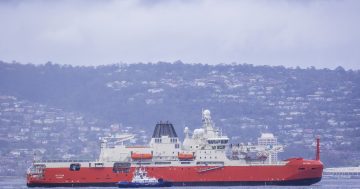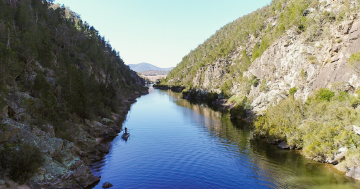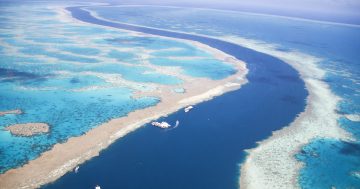Russell Drysdale* says researchers have a new tool to understand earth’s climate history, and how different regions may have responded to past global climate change
 The study of past climates – palaeoclimatology – involves the interrogation of physical, chemical and biological information stored in natural archives, such as ice cores and ocean sediments.
The study of past climates – palaeoclimatology – involves the interrogation of physical, chemical and biological information stored in natural archives, such as ice cores and ocean sediments.
For example, measurements on Antarctic ice cores are used to reconstruct past changes in temperature above the ice sheet and global concentrations of atmospheric greenhouse gases.
Estimating past temperatures is a fundamental piece in the palaeoclimate puzzle.
It helps us understand how each region responds to major episodes of global climate change.
Up until now, most of the information we have on past temperatures has come from ocean sediments and ice cores.
These contain chemical properties that change largely in response to temperature.
But these only tell us about temperature in the ocean basins and polar regions.
What about the land masses that occupy the rest of the Earth’s surface – upon which we live?
It turns out that the options in terrestrial environments are limited: the natural archives we study tend to lack the properties that are direct proxies for temperature.
In a recent study published in Nature Communications, we showed that magnesium (Mg) variations in a rarely studied archive – submerged speleothems – mimic ocean-temperature changes over hundreds of thousands of years.
Speleothems are calcium carbonate mineral deposits that form in caves.
Stalagmites are the best-known examples and are widely used in studies of past climate and environmental change.
Submerged speleothems are different. They grow in cave pools and lakes, and sometimes beneath the groundwater table.
In our study, we drilled a core sample from a submerged speleothem in Laghetto Basso, a pool situated inside the massive Antro del Corchia cave system in Tuscany, Italy.
First, we took a series of samples spaced at one millimetre intervals along the core’s growth profile.
The Mg content of these samples was analysed by colleagues at the Australian Nuclear Science and Technology Organisation.
The results, which cover the last four ice-age cycles (approximately the last 350,000 years), show a remarkable correlation to sea-surface temperature patterns recorded in ocean sediment cores from the North Atlantic.
This was an exciting, but unexpected, discovery for our team as it suggested that we had found a chemical property that responds to temperature changes.
To verify this similarity, we focused our attention on a time slice within this interval called Termination II – this was period when the penultimate ice age came to an end, dated at between 136,000 and 128,000 years ago.
During this period of warming, nearby ocean temperatures increased by 8℃ in a matter of a few thousand years, so we were expecting a large increase in Mg concentrations in the subaqueous speleothem.
This time, we sampled the speleothem using a laser beam three one-hundredths of a millimetre in diameter, and measured the abundance of different elements on a mass spectrometer at University of Melbourne’s School of Earth Sciences.
We found the results were exactly as we expected, but even more compelling: a sharp rise in Mg occurred at exactly the same time as the sharp rise in ocean temperatures reported in other studies.
So, how does Mg work as a temperature sensor?
Mg has a strong affinity for calcium carbonate minerals, particularly calcite. It can occupy the position of calcium (Ca) ions in the calcite crystal structure. Importantly, as the temperature of the solution increases, the amount of Mg ending up in the calcite also increases.
If the Mg concentration in the solution remains constant, but the water temperature increases, the Mg concentration in the calcite will increase.
But there’s a hitch.
In cave waters, the Mg to Ca ratio is rarely constant through time – it changes according to how much water is passing through the aquifer rock en route to where the speleothem is growing.
This ‘hydrological effect’ usually far outweighs the temperature dependency of Mg.
But subaqueous speleothems, like the one we studied, are different.
They grow about 10 times slower than stalagmites formed from the same cave water. This is because the reactions that transfer the ions dissolved in the pool water to solid calcite crystal are extremely slow.
It appears that the temperature dependency of Mg partitioning from the pool water to the calcite is significantly higher in the slow-reaction environment of the pool, to such an extent that it counters any hydrological effect.
For decades, oceanographers have been measuring Mg concentrations in marine microfossils and corals to estimate past ocean temperatures.
It works well in this case because ocean-water Mg variations over the last few million years are relatively small.
But our study is the first to show that Mg in a speleothem can act as a temperature proxy.
This is because scientists have not considered subaqueous speleothems before.
Our next step is to convert the relative changes in the Mg content to absolute temperature values to produce a time series of temperature changes at the cave site.
The results from our study open up exciting new opportunities in the search for terrestrial records of past temperatures.
*Russell Drysdale is an Associate Professor at the University of Melbourne
This article first appeared at pursuit.unimelb.edu.au











